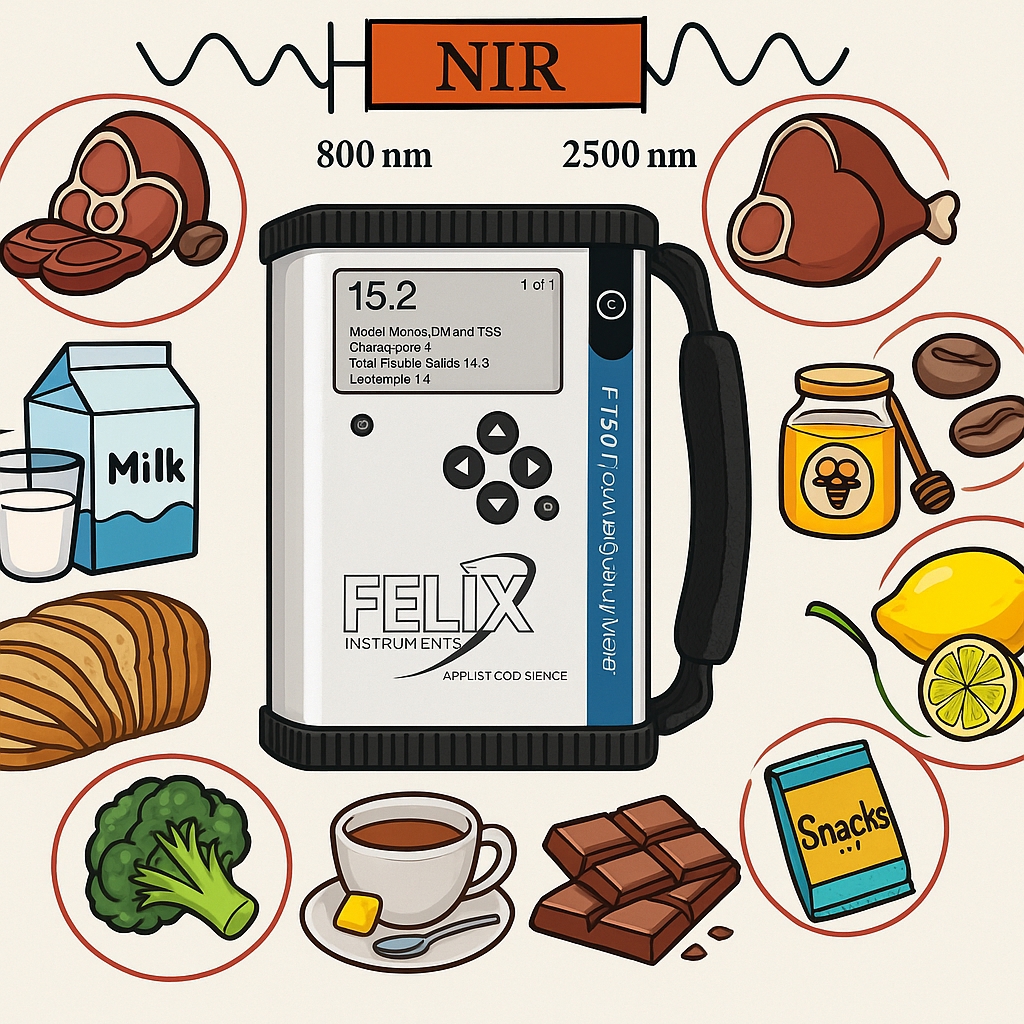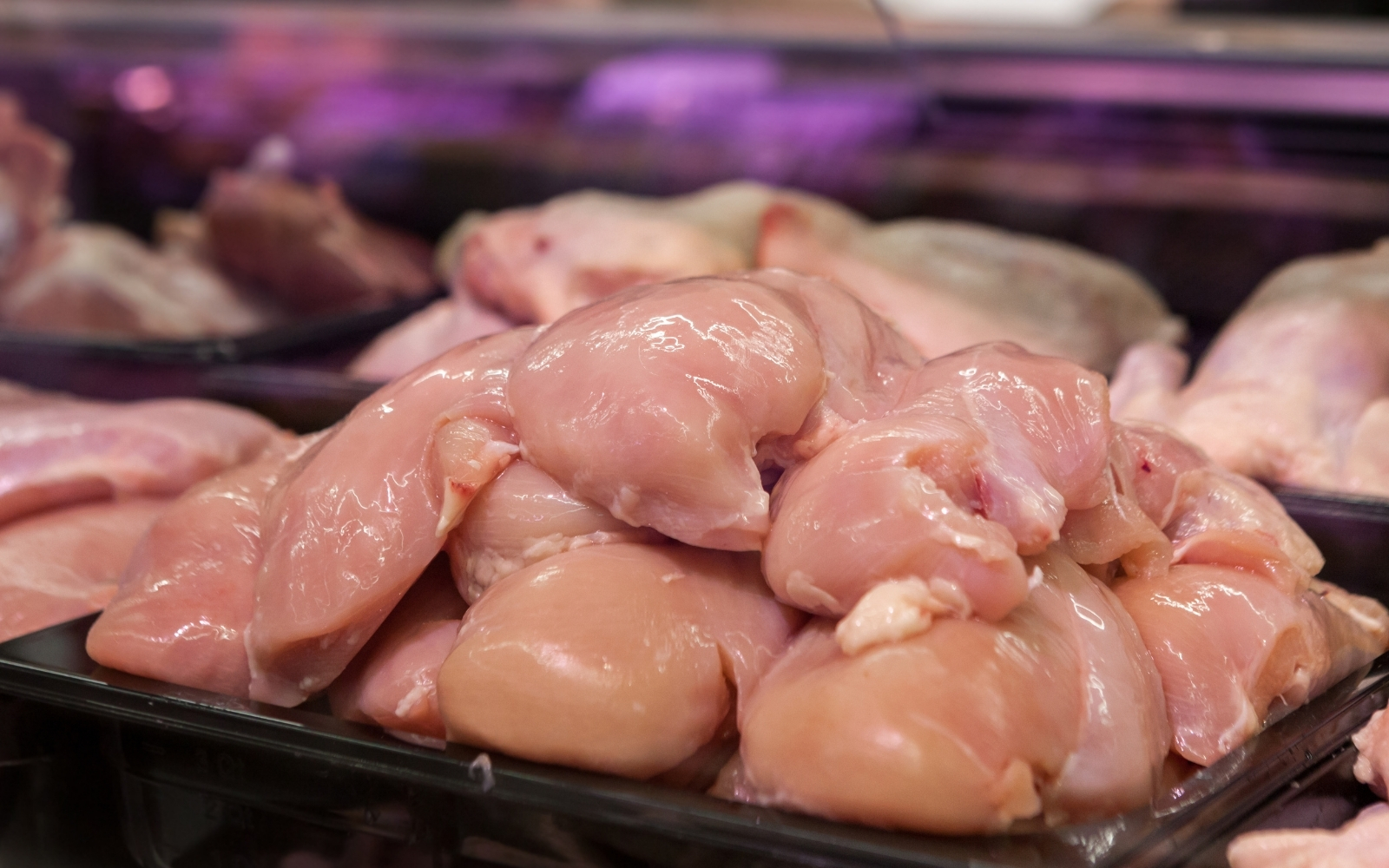November 17, 2025 at 5:13 pm | Updated November 17, 2025 at 5:13 pm | 8 min read
- Determining the geographic origin of meat is necessary to authenticate the quality and specialty indicators of origin.
- Geographic origin determination is also necessary to control the entry of banned meat contaminated with animal pathogens and to prevent the spread of disease.
- Near-infrared spectroscopy is one of the easiest, portable, and accessible methods of meat analysis for determining geographical origin and can be used throughout the entire supply chain.
Meat and processed meat products account for approximately 40% of global protein intake and have doubled over the past 20 years. The demand for meat is rising as populations grow and prosperity increases. Authentication of the geographical origin is necessary for several reasons, as a significant portion of meat products is imported into many regions. This article explores the reasons why the geographical origin of meat products is necessary and how near-infrared spectroscopy aids in this process.
Need to Establish the Geographical Origin of Meat Products
The primary reasons for verifying the geographical origin of meat products are consumer preference, maximizing profits, ensuring traceability, and addressing health concerns.
Consumer preferences and profits
As the food supply chain becomes increasingly international, several products are protected by geographical indications (GIs), which indicate their geographical origin and serve as a guarantee of quality, holding the same value as trademarks.
Subscribe to the Felix instruments Weekly article series.
By submitting this form, you are consenting to receive marketing emails from: . You can revoke your consent to receive emails at any time by using the SafeUnsubscribe® link, found at the bottom of every email. Emails are serviced by Constant Contact
In the USA, GIs indicate that a good originates in a particular region or locality of a “Member of the World Trade Organization’s (WTO) 1994 Agreement on Trade-Related Aspects of Intellectual Property (TRIPS),” and has specific qualities or reputation. For example, PARMA ham.
In the European Union, these indications are referred to as Protected Designation of Origin (PDO) and Protected Geographical Indication (PGI). Both indicate food products that possess special characteristics specific to a geographical environment, which encompasses both human and natural factors.
- Products with PDO have stronger links to the area of origin. The entire production, preparation, and processing is done in the specific region. For example, PARMA ham.
- Food with PGI is that which has at least part of the process or production occurring in a specific area. For example, the “Westfälischer Knochenschinken PGI ham” is not produced in Westphalia, Germany, but is processed in this area using traditional techniques.
Consumers are willing to pay a premium price for food with provenance identified by PDO, PGI, and GI indicators, for its quality and taste. However, food producers and suppliers face challenges proving the geographical origin of their products, hindering their ability to maximize profits. Fraud and false claims of origin need to be detected to establish confidence in food origins.
Health concerns
The trade in animal products is influenced by the prevalence of animal diseases, which affect food safety. For example, trade in beef and dairy products is affected by the incidence of bovine spongiform encephalopathy (BSE) and foot-and-mouth disease. After slaughter, determining the region of origin is challenging using only registration methods. Similarly, avian influenza resulted in a ban on poultry imports into the European Union (EU) from Thailand and other Asian nations. In these cases, establishing a geographical origin builds confidence in a meta product. Hence, the EU Regulation 1760/2000 and the Swiss regulation (LMV, Art. 22a, VAPR Art. 2) require food with more than 20% meat to declare and identify the geographical origin.
It is possible to limit the spread of diseases if the geographical origin of meat products is known. Geographical authentication enables the supply chain to trace and verify contaminated food, thereby preventing the spread of pathogens through food recalls.
Traceability
Providing information and establishing the geographical origin of meat products can help trace food components and contaminants, as well as authenticate food products for economic and safety reasons. For example, information about meat origins influenced the purchase decisions of 71% of Swiss consumers to avoid unsafe food.
The EU and the USA require food traceability for consumer protection.
Selecting an Analysis Method
However, authentication of geographical origin that complies with national and international regulations and meets analytical standards is one of the challenges that wholesalers, exporters, and food service operators face at distribution centers.
To establish the geographical origin of meat and its processed products, a convenient on-site method is necessary. The need to determine the geographical origin of meat prompted scientific efforts to develop appropriate analytical methods since the 1980s.
Currently, many approaches are used to determine the geographical origin of meat.
Food and environmental link
It has been proven that the food, water, and soil in regions where animals are raised influence the chemical composition of the animals, leaving distinct elements in the meat that can be identified, resulting in a unique “meat fingerprint.” For example, in Argentina, beef was linked to the water and soil, indicating that the meat originated from the region.
The methods based on this rationale are as follows:
Trace elements: Detecting trace elements such as zinc and selenium, or multiple elements found in a region’s soil, can effectively establish a connection to a specific area. However, supplementary animal feed can also be procured and transported over long distances, carrying elements such as zinc, copper, selenium, and manganese from the region where it is produced, which are then integrated into the meat. So, the elements detected may not indicate the area where the animals grow. Organic meat suffers less from this problem when it is free-range or fed locally sourced feed, but conventional meat production relies heavily on supplementary feed. Moreover, the trace elements accumulate in the liver and kidney and may be absent in other meat cuts. Pollution that travels far reduces the reliability of trace elements.
Isotope ratios: The basis for analysis is the existence of stable-isotope ratios specific to soil, water, and feed. Hence, isotope ratios can serve as region-specific indicators, similar to trace elements. Isotopes and ratios of carbon (C), nitrogen (N), sulfur (S), oxygen (O), and hydrogen (H) can be used. However, as with trace elements, feed can influence the ratio, as it too carries C and N isotopes. Hydrogen and oxygen are carried by water. Therefore, only isotopes of Strontium (Sr) that originate from geological features, such as rocks, are reliable geographical indicators.
Gross chemical composition
Methods that analyze the meat’s gross chemical composition can circumvent the problems posed by trace-element analysis in determining the geographical origin. The proportion of primary compounds in meat, such as dry matter, moisture content, protein, amino acids, and fat, varies in animals grown in different areas. These differences can be used to specify geographical location.
The methods used to analyze chemical composition include gas chromatography and coupled plasma mass spectrometry. However, these methods are tedious, expensive, and destructive.
Near-infrared spectroscopy (NIRS), in combination with chemometrics, is a rapid, precise, cost-effective, and non-destructive method for determining the geographical origin of foodstuffs. It is easier to estimate than trace elements and isotope ratios. This method is still being tested and refined to improve the classification of meat by its geographical origin.
- NIR spectroscopy was found to be more accurate than crude protein estimation for determining complex amino acid profiles in meat and poultry.
- Beef and pork are best analyzed by water, fat, and protein by NIRS.
- Collagen in meat connective tissue can also be used for NIRS analysis.
- Moisture content is associated with various processing treatments and can be used to analyze meat products and differentiate sources. Protein and fat content are also used to test processed products.
The accuracy of the NIRS method and chemometrics is improving, but it can still vary substantially. A 2012 study found that lamb from five regions in China could be classified with over 80% accuracy into two groups using NIRS. In 2015, tilapia filets from four provinces in China were accurately classified by NIRS-based chemical composition analysis into their respective regions, with 98-99% accuracy.

Figure 1: NIR technology enables the rapid and non-destructive determination of the typical quality characteristics of food categories, their origin, and the detection of potential counterfeits
Near-infrared Spectroscopy
NIR wavelengths are selected for analysis because carbon-based compounds such as amino acids, fats, proteins, and carbohydrates, as well as water, interact most with this band. The O–H, C–H, and N–H chemical bonds that bind the various elements in the compounds absorb, reflect, or transmit NIR light wavelengths. Spectroscopy measures the interaction of matter with light. Solar light is diffracted, and the selected wavelengths are projected onto the food being analyzed to ensure absorption and emission.
NIRS is practical for qualitative and quantitative analysis. It identifies the various compounds present in a sample and their quantities. The devices have been miniaturized and incorporate chemometric models to analyze complex, large spectral data sets, providing simple insights into quality parameters and specific compounds.
NIRS has already been utilized for quality control of animal products and to determine their chemical composition. Determining the chemical composition of animal products has various applications in the food supply chain, including the identification of species and breed, and the detection of adulterants, as well as during processing (see Figure 1).
Felix Instruments Quality Meters
The use of NIRs for geographical origin determination is just beginning, as the benefits of traceability are gaining recognition. Only a few instruments are available to test meat products. However, the broader application of NIRS is feasible in the near future by adapting and using existing devices on the market. The market-standard NIRS tool for fresh produce, such as the general F-750 Produce Quality Meter, can also be used to test meat products. It utilizes the 310-1100 nm wavelength range, which is necessary for meat testing. The small portable instrument supports model building for new food products. The small, portable instrument analyzes NIR spectra in real-time and provides easy-to-understand results, and requires no training to use.
Contact us at Felix Instrument Food Science to learn more about our quality meters.
FAQ
Why is determining the geographical origin of meat products essential?
Determining origin verifies authenticity, supports food safety, and prevents fraud. It ensures that consumers receive products that are true to their labeling, especially those protected by geographical indications (PDO, PGI, GI), and helps prevent the spread of disease by tracing contaminated meat back to its source.
How does near-infrared spectroscopy (NIRS) help identify meat origin?
NIRS measures how meat absorbs and reflects specific wavelengths of light to detect its unique chemical composition. Because factors like soil, water, and feed influence the composition, the resulting “spectral fingerprint” can be matched to specific regions—making NIRS a fast, accurate, and non-destructive method for verifying origin.
What are the benefits of using NIRS throughout the meat supply chain?
NIRS devices are portable, simple to operate, and deliver instant results. They enable producers, regulators, and retailers to authenticate meat products throughout the supply chain, improving transparency, ensuring quality, and maintaining consumer trust.
Sources
Abbas, O., Zadravec, M., Baeten, V., Mikuš, T., Lešić, T., Vulić, A., … & Pleadin, J. (2018). Analytical methods used for the authentication of food of animal origin. Food chemistry, 246, 6-17.doi:https://doi.org/10.1016/j.foodchem.2017.11.007
Baroni, M. V., Podio, N. S., Badini, R. G., Inga, M., Ostera, H. A., Cagnoni, M., … & Wunderlin, D. A. (2011). How much do soil and water contribute to the composition of meat? A case study: Meat from three areas of Argentina. Journal of agricultural and food chemistry, 59(20), 11117-11128.
Chernukha, I., Kotenkova, E., Pchelkina, V., Ilyin, N., Utyanov, D., Kasimova, T., Surzhik, A., & Fedulova, L. Pork Fat and Meat: A Balance between Consumer Expectations and Nutrient Composition of Four Pig Breeds. Foods, 12(4), 690. https://doi.org/10.3390/foods12040690
Dehelean, A., Cristea, G., Puscas, R., Hategan, A. R., & Magdas, D. A. (2022). Assigning the geographical origin of meat and animal rearing system using isotopic and elemental fingerprints. Applied Sciences, 12(23), 12391.
European Union. (n.d.). Geographical indications and quality schemes explained. Retrieved from https://agriculture.ec.europa.eu/farming/geographical-indications-and-quality-schemes/geographical-indications-and-quality-schemes-explained_en
Fodor, M., Matkovits, A., Benes, E. L., & Jókai, Z. The Role of Near-Infrared Spectroscopy in Food Quality Assurance: A Review of the Past Two Decades. Foods, 13(21), 3501. https://doi.org/10.3390/foods13213501
Franke, B. M., Gremaud, G., Hadorn, R., & Kreuzer, M. (2005). Geographic origin of meat—elements of an analytical approach to its authentication. European Food Research and Technology, 221(3), 493-503.
Franke, B. M., Haldimann, M., Reimann, J., Baumer, B., Gremaud, G., Hadorn, R., … & Kreuzer, M. (2007). Indications for the applicability of element signature analysis for the determination of the geographic origin of dried beef and poultry meat. European Food Research and Technology, 225(3), 501-509.
Franke, B. M., Haldimann, M., Gremaud, G., Bosset, J. O., Hadorn, R., & Kreuzer, M. (2008). Element signature analysis: its validation as a tool for geographic authentication of the origin of dried beef and poultry meat. European Food Research and Technology, 227(3), 701-708.
Jia, W., Van Ruth, S., Scollan, N., & Koidis, A. (2021). Hyperspectral Imaging (HSI) for meat quality evaluation across the supply chain: Current and future trends. Current Research in Food Science, 5, 1017-1027. https://doi.org/10.1016/j.crfs.2022.05.016
Katerinopoulou, K., Kontogeorgos, A., Salmas, C. E., Patakas, A., & Ladavos, A. (2020). Geographical origin authentication of agri-food products: A review. Foods, 9(4), 489.
Liu Y, Ma D-H, Wang X-C, Liu L-P, Fan Y-X, Cao J-X. (2015). Prediction of chemical composition and geographical origin traceability of Chinese export tilapia fillets products by near infrared reflectance spectroscopy. LWT Food Sci Technol. 60:1214–8. doi: 10.1016/j.lwt.2014.
09.009
Monahan, F. J., Schmidt, O., & Moloney, A. P. (2018). Meat provenance: Authentication of geographical origin and dietary background of meat. Meat science, 144, 2-14.
Santomá-Martí, A., Aijon, N., & Núñez, O. (2025). Meat Authentication Based on Animal Species and Other Quality Meat Attributes (Protected Geographical Indication, Organic Production, and Halal and Kosher Products) by HPLC–UV Fingerprinting and Chemometrics. Food Analytical Methods, 1-17.
Sun, S., Guo, B., Wei, Y., & Fan, M. (2012). Classification of geographical origins and prediction of δ13C and δ15N values of lamb meat by near infrared reflectance spectroscopy. Food Chemistry, 135(2), 508-514. https://doi.org/10.1016/j.foodchem.2012.05.004
Tostado, L. (2021, Sept. 7). Meat consumption: Everyday food and luxury good. In Meat Atlas; European Union: Brussels, Belgium. Retrieved from https://eu.boell.org/en/2021/09/07/consumption-everyday-food-and-luxury-good
USPTO. (n.d.). Geographical indications. Retrieved from https://www.uspto.gov/ip-policy/trademark-policy/geographical-indications
Related Products
Most Popular Articles
- Spectrophotometry in 2023
- The Importance of Food Quality Testing
- NIR Applications in Agriculture – Everything…
- The 5 Most Important Parameters in Produce Quality Control
- Melon Fruit: Quality, Production & Physiology
- Fruit Respiration Impact on Fruit Quality
- Guide to Fresh Fruit Quality Control
- Liquid Spectrophotometry & Food Industry Applications
- Ethylene (C2H4) – Ripening, Crops & Agriculture
- Active Packaging: What it is and why it’s important






